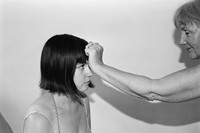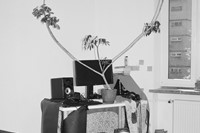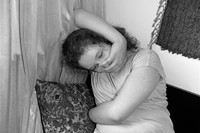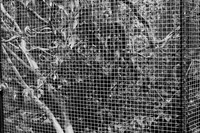The celebrated Polish photographer’s new book explores the complex domestic spaces we inhabit, which are “often built on inequality and violence”
Joanna Piotrowska’s photographs are often described as ‘unsettling’ or ‘uncanny’, even ‘disturbing’. The Polish image-maker, who is based in London, is known for her black and white works which mine themes like shelter, violence, domesticity and agency. Captured via shots of bodies or structures with a super-sharp focus, the subtext of such ideas makes for these feelings of unease. Piotrowska’s work has been acclaimed since her graduation from London’s Royal College of Art in 2013, her photographs later appearing in MoMA’s annual Being: New Photography show in 2018 and making up a solo exhibition at Tate Britain the following year. Now, Stable Vices is a title which brings together three of Piotrowska’s series, newly published by MACK.
The book’s title Stable Vices is taken from the concerning ways horses behave if left to their own devices in confined spaces, starved of exercise, attention and stimulation. “Walking in circles, crib-biting, and weaving are all examples of the mal-effects our human-designed enclosures can have on non-human species,” Piotrowska writes over email. “The term is primarily used in an equine context but many other wild animals in captivity exhibit similar behaviours. It is only now that we talk about ‘dysfunctional environments’ rather than the dysfunctional behaviours which are in reality, a very natural response to oppression.” Looking at her photography through this lens of behavioural psychology, the complex threads that run through each series are more apparent. “I selected this term because I think it has a strong relationship to other themes in the book – our created physical environments, in the context of our domestic space but also the existing relationships and systems within which we function – often, built on inequality and violence.”
The third series featured in Stable Vices feels perhaps most explicitly linked to these ideas of confinement and human interaction – though each explores these subjects in some form. Piotrowska captures series of enclosures – stark and empty of life but crammed with things – which are clearly man-made for holding animals. They are the cages, boxes, pools and vitrines we are used to seeing at zoos, except, in Piotrowska’s images, there are no animals beyond the wire fences and glass windows. As Joanna Bednarek writes in an essay entitled Animals Beyond the Forest published in the book, the lack of life in these staged habitats is unnerving. “The crampedness of the space is palpable: it is as if we were imprisoned, or at least confronted with the mechanism by which we create structures that imprison both humans and other animals … The photographs evoke an atmosphere of desolation: freedom and play seem far removed from the world they suggest.”
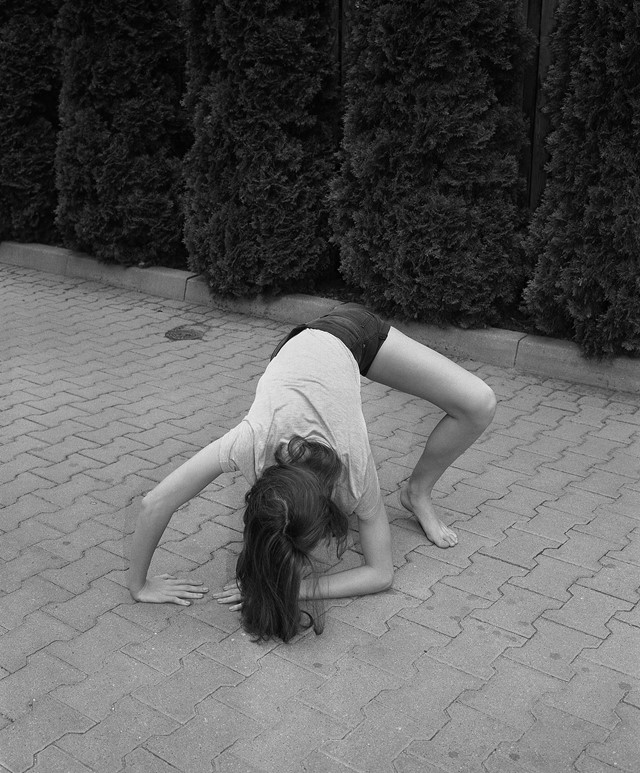
This suggestion of violence is echoed in Piotrowska’s untitled series which draws on women and self-defence, and appears first in Stable Vices. The series draws on illustrated self-defence manuals Piotrowska discovered, as well as the writings of Carol Gilligan, a longtime influence on her practice. (Gilligan’s work as a feminist and psychologist has analysed the position of women in society and morality via influential books like A Different Voice.) “I had been very concerned about vulnerability and the position of women. The figures in self-defence manuals were obviously men,” Piotrowska told The Guardian in 2019 as her Tate Britain exhibition, All Our False Devices, was staged. “I wanted to start staging these positions with women in domestic spaces. We need to defend ourselves and use our bodies as a weapon.” The resulting photographs are some of Piotrowska’s most commanding: various women are seen in poses, their bodies contorted, sometimes with an unknown man’s hands interfering somehow. Defending against an invisible oppressor and seeking protection also intersect in Shelter, Stable Vice’s second series: staged photographs depicting forts built up from soft furnishings and household objects – like the childhood game – in which the subjects then take shelter.
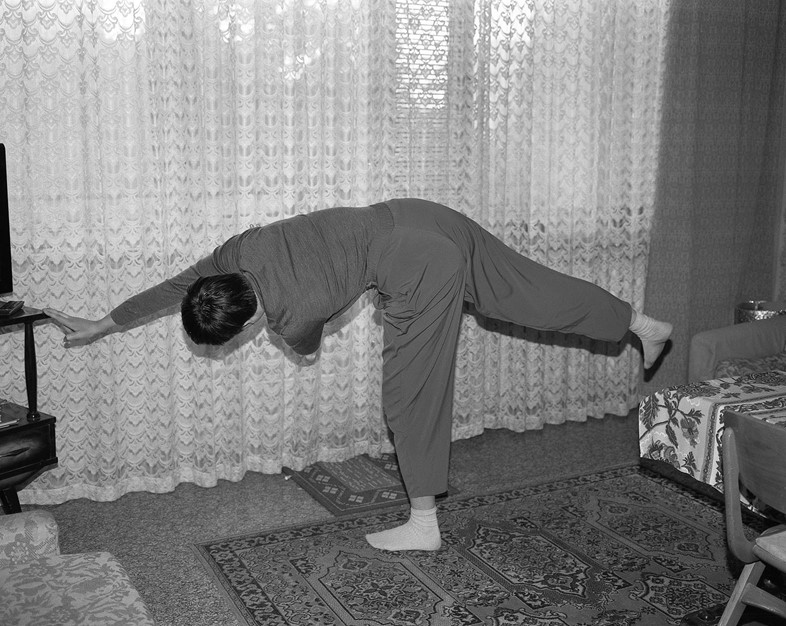
Piotrowska looks to choreographers, writers and filmmakers, finding that the likes of Sharon Eyal, Pina Bausch, Virginia Woolf, Margaret Atwood and Chantal Akerman inform her own practice. During the past year, when London has been in and out of Covid-19 lockdowns, she has dedicated time to exploring more work, especially films. “London was very apocalyptic (and inspiring),” she says. “Undistracted by crowds and noise and the constant sensory overload, the city was a complete metamorphosis. Everything was different, somehow slower and I immersed myself in a self-guided cinema programme – I watched 13 films by Eric Rohmer, most of the films by Cassavetes, very early Coppola movies, some Japanese classics, most of the films of Chantal Akerman and quite a lot from Italian neorealism. It was very intense and amazing to finally be able to watch all those films.” After more than a year of restrictions, Piotrowska’s photographs – and how they explore ideas of confinement, shelter, inequality and oppression – feel especially arresting and vital, in their uniquely unsettling ways.
Stable Vices by Joanna Piotrowska is out now, published by MACK.

